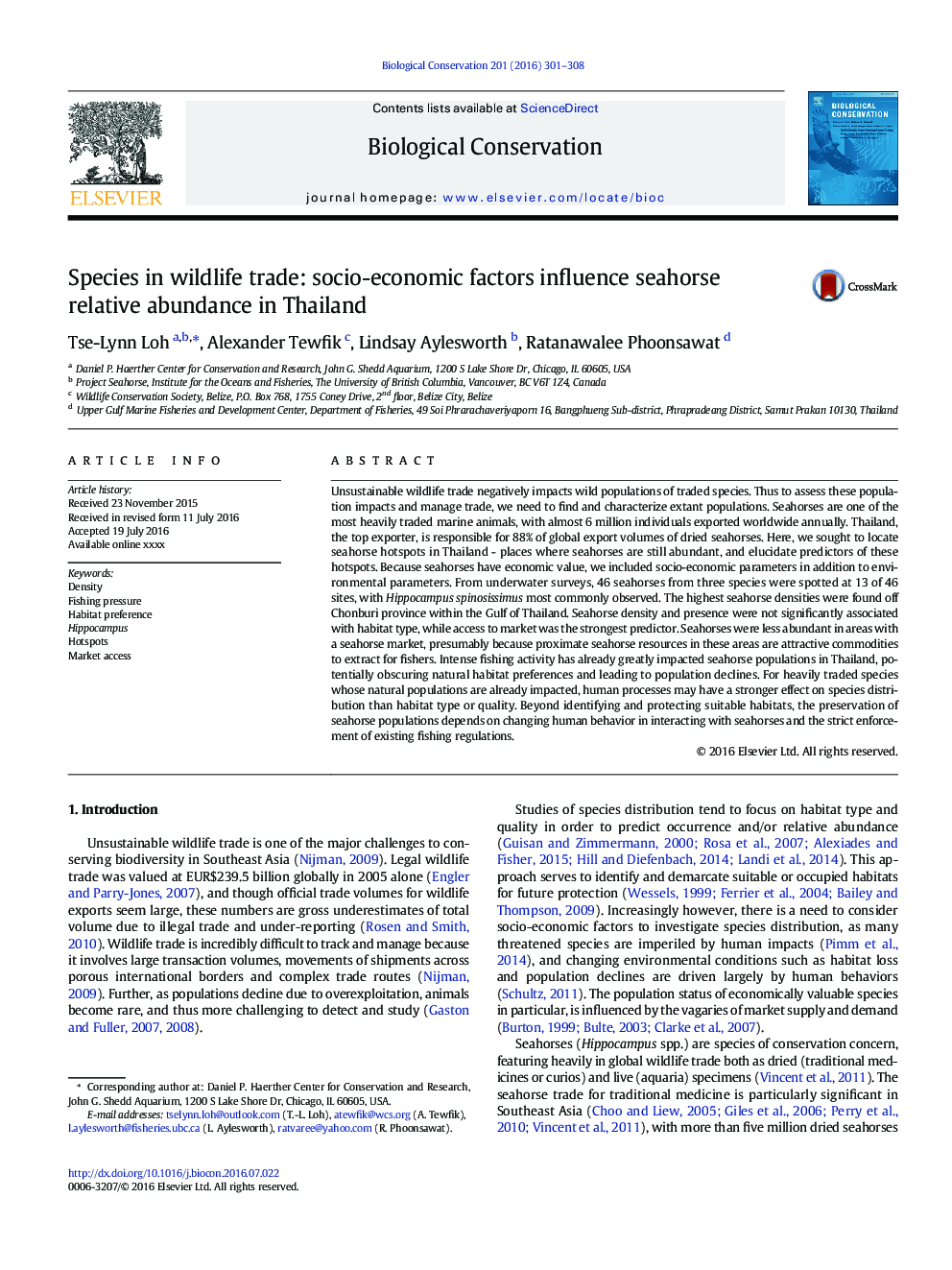| کد مقاله | کد نشریه | سال انتشار | مقاله انگلیسی | نسخه تمام متن |
|---|---|---|---|---|
| 6298220 | 1617900 | 2016 | 8 صفحه PDF | دانلود رایگان |
عنوان انگلیسی مقاله ISI
Species in wildlife trade: socio-economic factors influence seahorse relative abundance in Thailand
ترجمه فارسی عنوان
گونه های موجود در تجارت وحشی: عوامل اجتماعی-اقتصادی بر میزان فراوانی نسبی فراوان در تایلند تاثیر می گذارد
دانلود مقاله + سفارش ترجمه
دانلود مقاله ISI انگلیسی
رایگان برای ایرانیان
کلمات کلیدی
تراکم، فشار ماهیگیری، اولویت محل زندگی، هیپوکامپ، نقاط قوت دسترسی به بازار،
موضوعات مرتبط
علوم زیستی و بیوفناوری
علوم کشاورزی و بیولوژیک
بوم شناسی، تکامل، رفتار و سامانه شناسی
چکیده انگلیسی
Unsustainable wildlife trade negatively impacts wild populations of traded species. Thus to assess these population impacts and manage trade, we need to find and characterize extant populations. Seahorses are one of the most heavily traded marine animals, with almost 6 million individuals exported worldwide annually. Thailand, the top exporter, is responsible for 88% of global export volumes of dried seahorses. Here, we sought to locate seahorse hotspots in Thailand - places where seahorses are still abundant, and elucidate predictors of these hotspots. Because seahorses have economic value, we included socio-economic parameters in addition to environmental parameters. From underwater surveys, 46 seahorses from three species were spotted at 13 of 46 sites, with Hippocampus spinosissimus most commonly observed. The highest seahorse densities were found off Chonburi province within the Gulf of Thailand. Seahorse density and presence were not significantly associated with habitat type, while access to market was the strongest predictor. Seahorses were less abundant in areas with a seahorse market, presumably because proximate seahorse resources in these areas are attractive commodities to extract for fishers. Intense fishing activity has already greatly impacted seahorse populations in Thailand, potentially obscuring natural habitat preferences and leading to population declines. For heavily traded species whose natural populations are already impacted, human processes may have a stronger effect on species distribution than habitat type or quality. Beyond identifying and protecting suitable habitats, the preservation of seahorse populations depends on changing human behavior in interacting with seahorses and the strict enforcement of existing fishing regulations.
ناشر
Database: Elsevier - ScienceDirect (ساینس دایرکت)
Journal: Biological Conservation - Volume 201, September 2016, Pages 301-308
Journal: Biological Conservation - Volume 201, September 2016, Pages 301-308
نویسندگان
Tse-Lynn Loh, Alexander Tewfik, Lindsay Aylesworth, Ratanawalee Phoonsawat,
